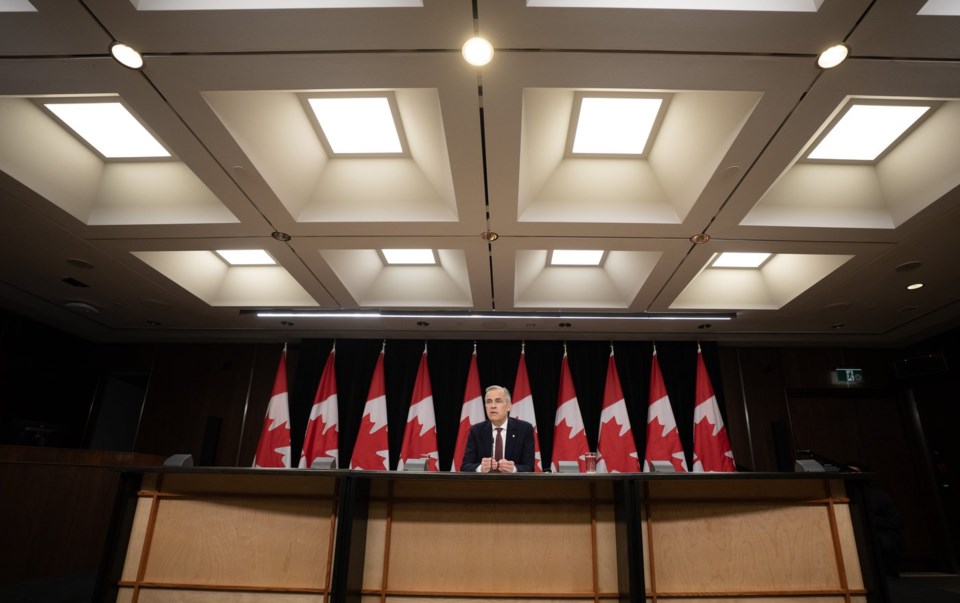OTTAWA — Prime Minister Mark Carney on Friday held his first news conference since his Liberals won a minority government mandate in Monday's election.
He now has a long list of tasks to complete in the coming weeks. Here are some of the items he'll have to address:
Meeting with Trump
Carney confirmed Friday that he'll be travelling to Washington to meet with U.S. President Donald Trump on May 6 for their first in-person meeting.
The prime minister has said repeatedly Canada's old relationship with the United States "is over" and his meeting with Trump is meant to address the trade war between the two countries.
He said Friday he expects the discussions will be "difficult but constructive" and that he'll work to get the best trade deal for Canada.
Carney and Trump have spoken by phone already and the U.S. president seemed to tone down his talk of annexing Canada during the election campaign. Trump referred to former prime minister Justin Trudeau as the "governor" of Canada but has not used the same language for Carney.
Picking a cabinet
Carney said he will have his cabinet sworn in the week of May 12 but hasn't dropped any hints about who will be in it.
After winning the Liberal leadership in March, Carney swiftly appointed 23 MPs to his cabinet, not including himself. It was smaller than former prime minister Justin Trudeau's last team. Carney wouldn't say Friday whether his postelection cabinet would be larger.
During the election campaign, the Conservatives frequently accused Carney of –°¿∂ ”∆µ cut from the same cloth as the unpopular Trudeau and speculated that his cabinet would have the same faces and pursue the same policies.
Carney did commit to gender parity in his cabinet, a standard established by Trudeau when he took office in 2015.
Bringing back Parliament
Carney said he'll recall Parliament on May 26 and announced that King Charles will deliver the speech from the throne the next day.
No member of the Royal Family has delivered a throne speech in Ottawa since Queen Elizabeth in 1977. The speech, which lays out the government's plans, is written by the prime minister and his team and is usually read by the Governor General.
Speaking to reporters on Friday, Carney said having the monarch deliver the throne speech is a way to "clearly underscore the sovereignty of our country."
His path to a majority got a little longer on Thursday when the riding of Terrebonne in Quebec flipped from the Liberals to the Bloc Québécois after an Elections Canada validation process. A judicial recount will be held.
The loss means the Liberals now have to swing four opposition MPs to their side to pass legislation.
Asked whether he would formalize an agreement with the NDP — similar to the supply-and-confidence agreement that kept the previous minority government alive — Carney said he would not.
Carney also will have to call a byelection in Alberta. Incumbent Conservative MP Damien Kurek announced Friday he will step aside from his seat in Battle River-Crowfoot to let party leader Pierre Poilievre run in the riding.
The prime minister told reporters Friday he would ensure the byelection happens "as soon as possible."
"No games, nothing. Straight," Carney said.
Passing a budget
The Carney government is also expected to introduce a budget this summer.
The federal government's last budget was introduced in April 2024 — they're typically tabled in the spring. Pushing it to the fall would mean a year-end-a-half gap between versions of the government's most important spending plan.
At the very least, the government will need to introduce supply bills to get money flowing to departments. The last supplementary estimates bill was passed in November.
Carney ran on a platform of aggressive capital spending and the party projected nearly $225 billion in deficits over four years.
The party's plan includes $130 billion in new spending measures. But he reiterated on Friday his intention is to slow the rate of growth in government operations costs, calling the nine per cent annual increase in spending in recent years "unsustainable" and promising to bring that down to two per cent. He said he will do that without cutting transfers to provinces or individuals.
Tackling internal trade
One item at the top of Carney's to-do list is to come up with a plan to eliminate trade barriers between provinces and territories by Canada Day.
It's a pledge he made before the election campaign, when he hosted a meeting with the country's premiers in Ottawa and vowed to table legislation by July 1 to allow goods to travel across the country barrier-free.
In March, he also said his government would remove labour mobility restrictions in federally-regulated professions and eliminate duplication by recognizing provincial assessments for major projects.
Since the trade war with the United States began, most of Canada's premiers have pushed Ottawa in this direction. They argue allowing more free trade within the country would help bolster Canada's economy by opening new domestic markets.
This report by The Canadian Press was first published May 2, 2025
Nick Murray, The Canadian Press




